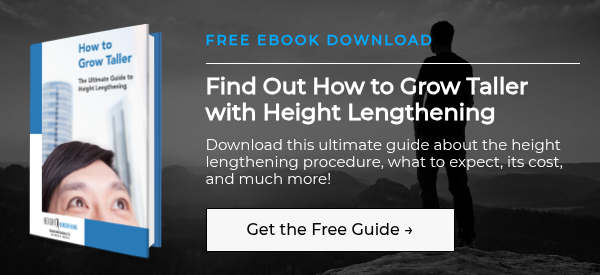How Long Does Limb Lengthening Surgery Take?

Limb length discrepancy (LLD) is quite a prevalent occurrence in both child and adult populations. Most persons with LLD have some degree of limb inequality either in structure or function. Limb length discrepancies may result from a poorly healed fracture, an illness, or a congenital disability. Studies reveal for most people, the average discrepancy is not more than 1.1 cm, with most patients easily compensating for it. However, larger discrepancies can pose more problems and may require more complex solutions. Where LLD is a problem, a qualified orthopedic surgeon can perform limb lengthening surgery to rectify the discrepancy.
Limb lengthening is a procedure performed to lengthen the bones in your legs or arms. The surgery is a gradual phased process that allows the bones and soft tissues such as nerves, muscles, and skin to increase in length, albeit slowly. A typical limb lengthening surgery can take several months to be completed.
Limb Lengthening Procedure Phases
1. Preparation Phase
As part of your preparation, you may need to plan to be in hospital one or two days before the surgery. During this time, you will learn about how to take care of yourself once the surgery is completed. You will also learn how to use various remote-controlled devices and the ideal exercises to engage after surgery. Your doctors may also enlighten you on the importance of honoring follow-up appointments.
2. Osteotomy Operation Phase
The process typically starts with a procedure called osteotomy that takes 2 to 3 hours. It is important to note limb lengthening relies on your body's ability to regenerate new bones and soft tissues such as blood vessels, nerves, and ligaments surrounding and supporting it. During the operation, your orthopedic surgeon will make cuts on the bone to be lengthened. The surgical team will then stabilize the limbs, which could be located in your lower or upper leg. The doctors can also perform further soft tissue procedures that prepare your nerves and muscles for lengthening.
The doctors will then insert an orthopedic lengthening device into the bone. After this procedure, the bones will be allowed to rest and heal for five to seven days in a phase known as the latency period.
3. Distraction Phase
Once the latency period ends, you will have to adjust the orthopedic lengthening device to enable it slowly and gradually pull apart the two bone segments. This process is called distraction and is the first of the two phases of recovery. Distraction helps promote new bone growth on the site of the surgery.
During the distraction phase, you will use an orthotropic remote controller to enable the orthopedic lengthening device to spread the gap in your bones. Progressive growth of the new bone tissue is accomplished by spreading the bone four times a day. Each spread covers ¼ mm to cover a total adjustment of 1 mm a day. Notably, your body produces new tissue to fill in the gap with each adjustment until the desired length is achieved.
Ideally, up to 1 inch or 2.5 cm of length can be gained per month. During this phase, you will need to see your physician several times each month to ensure the bone is not lengthening too slow or too fast. Your doctor will examine your bones using X-ray imaging to determine whether to slow down or speed up the regeneration process. Importantly, you will need to engage in physical therapy two to five times a week until the distraction phase is over.
4. Consolidation and Healing
The second phase of treatment enables the bone to consolidate, solidify and heal completely. It typically takes an average of 2 months to achieve a 5 cm lengthening. You will then need an additional 2 to 3 months for the new bone to solidify. The lengthening devices will also have to stay in place for up to 5 months.
When the lengthened bone is fully healed, the new bone will be as strong as any other bone in the body. Once lengthening is complete, you will cease using the orthotropic remote controller. However, the lengthening device will still stay in place to support the growing bone.
5. Removal of Lengthening Devices
Once the new bone has fully consolidated, your doctor can remove the lengthening devices in outpatient surgical procedures. The doctor will then apply a cast on the exposed area to provide extra protection to the new bone. You may also have to wear a brace for three to 4 weeks once the lengthening device has been removed.
What Happens If The Bone Lengthens Too Slowly or Too Quickly?
Although the standard rate is for bone lengthening is 1 mm per day, some patients may take a longer or shorter time to heal and regenerate the bones. Typically, healing tends to be much slower in diabetics and smokers. If you are experiencing a too slow or too fast rate of bone lengthening, you may need to visit the doctor every 7 to 14 days to make sure your new bones, muscles, and nerves are responding well to the procedure. In a scenario where the bone formation is poor, the doctor can advise you to adjust the orthopedic device to shorten the bone temporarily until your regenerate bone improves. The doctor can also insert a bone graft into the gap to stimulate the body to create regenerate bone faster.
What Can Prevent A Patient From Achieving Length Goal Within Ideal Time?
If you fail to attend physical therapy sessions, your muscle strength and range of motion could be affected. This will most likely force your doctor to stop the lengthening process temporarily. Other issues that affect your healing time include poor diet and smoking.
Note:
- For your bone to heal and solidify fast, you need to eat a healthy diet and avoid nicotine.
- During the first 6 to eight weeks after the surgery, you may need to use crutches, a wheelchair, or any other support to get around. However, you will gradually put weight on the affected limb with time and even start walking normally without any support.
- Typically, large lengthening goals require multiple lengthening procedures. For example, if your goal is to achieve a 4-inch lengthening, it is advisable to perform two 2 inch lengthening that is spread between two and three years than doing one procedure. Having a single 4-inch lengthening may result in more issues that could delay the healing time.
Choose Height Lengthening For Limb Lengthening
Studies reveal that taller people are happier and more confident than shorter individuals. If you are tired of being short, schedule a limb lengthening procedure with Height Lengthening Surgeons. We are renowned experts in limb lengthening procedures the world over. Our experts customize your treatments to fit your specific lengthening goals and get your swag back.
Our services will not only help you become taller and walk normally, but they are also designed to raise your confidence and help you achieve your lifelong goals.



